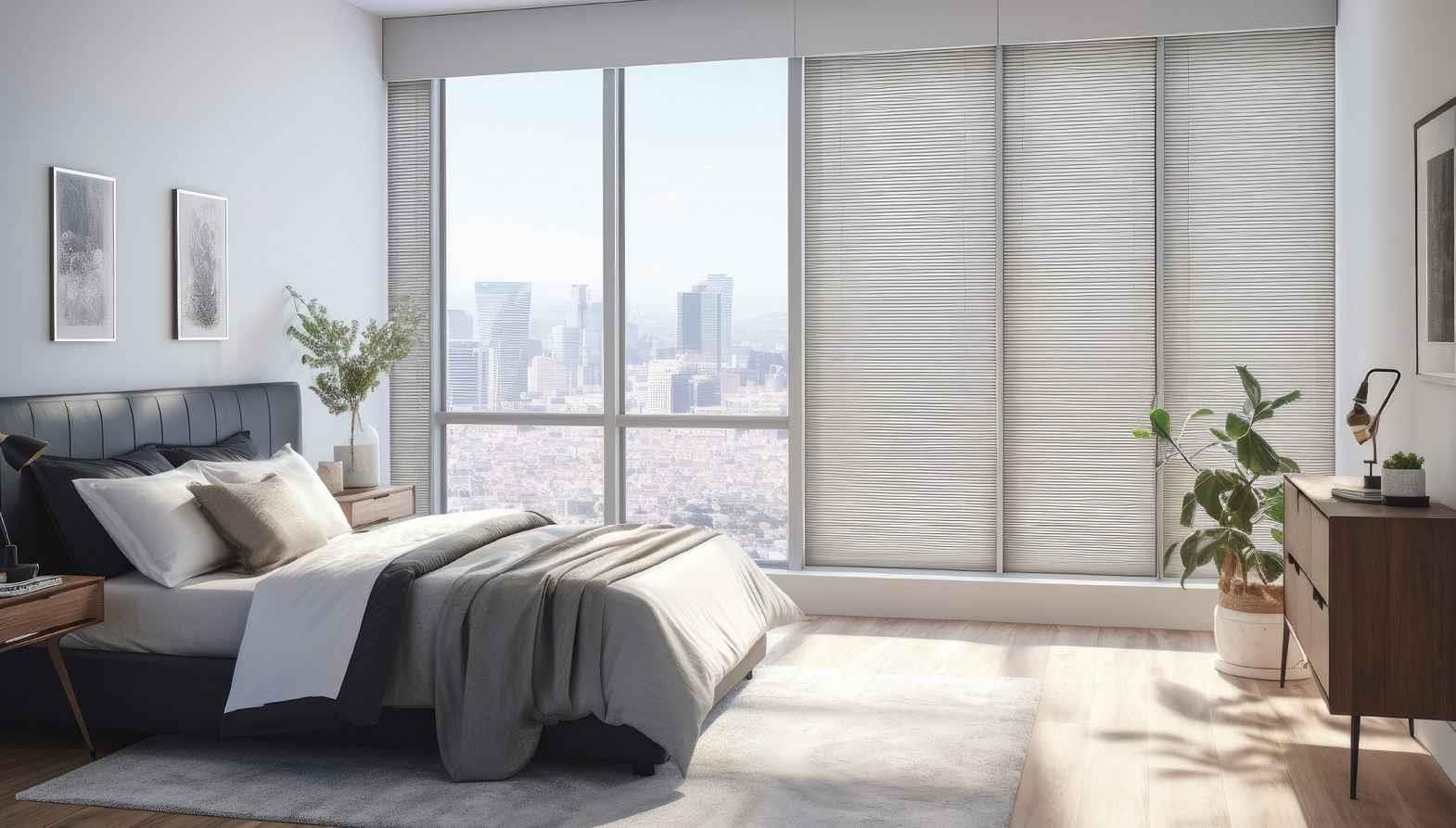In the realm of technical textiles, hometech stands out as a thriving domain, showing a surge in sales and an increase in consumer demand in recent years. In a current Global Hometech Market report1, hometech textiles ranked the 4th largest in terms of sales of all technical textiles.
Hometech products are made of natural and synthetic fibres and are widely used in furniture and interior decoration, cushion materials, wall coverings, and carpeting, among others. The global hometech textiles market, valued at $191.15 billion in 2022, is projected to reach $272.33 billion by 2030, with a growth rate of 4.7 per cent from 2022 to 2030, according to Fibre2Fashion’s market intelligence tool TexPro-Technical Textiles.
On a global scale, Western economies dominate the market share for hometech textiles, followed by the Asia Pacific region. This market segment witnessed a significant transformation in recent times, due to technological advancements and a commitment to meeting the evolving consumer needs.
Companies within the hometech textile industry are actively innovating to enhance the customer experience, introducing user-friendly products and services. The industry is striving to prioritise user satisfaction with items like smart gadgets that are seamlessly integrated into daily routines. Modern-day hometech textiles blend style with practicality, offering features like moisture control, temperature regulation, antimicrobial properties, and sound absorption.
Market Growth Factors
As stated, the hometech market is experiencing substantial growth and shows no signs of slowing down. So, what factors are contributing to its development?
The increased demand for hometech textiles stems from various market factors, emphasising comfort and luxury in the residential sector. According to TexPro-Technical Textiles, this increase is fuelled by global population growth, rising disposable incomes, and evolving lifestyles. Furthermore, office and commercial construction growth is a significant driver of the global hometech market.
The demand for hometech textiles is also rising due to consumer demands for more comfort, convenience, and well-being while in their place of residence. As people spend the majority of their time at home, the need to find textiles that cater to these demands becomes increasingly crucial for manufacturers.
Additionally, the COVID-19 pandemic has also accelerated the adoption of digital technology and remote work, increasing demand for resilient solutions in the hometech textiles market to meet these evolving needs.
Incorporating Smart Textiles and Technology
Technology aims to enhance convenience in various aspects of life, which remains true with home décor.
Smart textiles can now use special technology like sensors and automation to make everyone’s lives a tad bit easier. Items like smart curtains have been a game changer in modern design. They use special technology like sensors and automation to adjust themselves based on the amount of light pouring in. Smart curtains allow families to save more energy and pay less on their monthly bill.
But the impact goes beyond just curtains. Smart bedding aims to revolutionise how people sleep one thread at a time. Smart bedding can monitor a person’s sleep quality and adjust the mattress settings for the night’s rest. Furniture upholstery can regulate temperature for maximum comfort, decreasing the chances of experiencing those dreaded night sweats. The cutting-edge bedding tech company Bryte, conducted a study2 about restorative sleep, saying, “Restorative sleep is the aspect of sleep associated with improved subjective alertness, cognitive function, mood, energy, and/or well-being relative to the immediate pre-sleep period.” Kitchen textiles can enhance safety and functionality while cooking, and eco-friendly aprons and dish towels are prevalent.
While consumer demands are shifting, aesthetics are still not compromised. Smart textiles do not just prioritise function. They also elevate style. From LED-adorned fabrics to customisable designs, these textiles add a touch of ambiance and personalisation to any living space.
Technology usage in home textiles and fabrics is also helping push sustainability and wellness into the home. In its latest technology, Cotton Incorporated introduced RESTech COTTON3, designed to meet consumer demands for durability, sustainability, and innovation. This cutting-edge performance sheeting solution offers a blend of relaxed comfort, exceptional durability, and gentle softness, all while prioritising sustainability. Initially developed for bedsheets, this versatile technology can also be applied to various bedding products, including duvets and blankets.
According to Cotton Incorporated’s vice president and managing director of product development and implementation, Hongqin (Mike) Shen, Ph.D., RESTech COTTON combines the best attributes of cotton and cotton finishes, incorporating non-fluorine technology to create a unique, durable product. “It allows sheets to hold less moisture, dry more quickly, and maintain remarkable softness and comfort,” Shen explained.
Jennifer Lukowiak, director of supply chain marketing at Cotton Incorporated, highlights RESTech COTTON as an ideal choice for those seeking both better sleep and sustainability. “We’ve captured the timeless comfort of cotton and enhanced it with modern innovation,” Lukowiak states. “It’s another proud milestone in our continuous effort to promote the natural excellence of cotton.”
According to Cotton Incorporated’s 2023 Home Textiles Survey, cotton’s natural excellence remains highly valued by consumers, with 70 per cent expressing a preference for textiles described as 100 per cent cotton.
In all, integrating technology into the hometech market ushers a new era of innovation in home design and revolutionises how individuals interact with their living environments.
Wellness in the Home
The importance of health and wellness has increased for consumers in recent years. From diet to clothing to skin care, consumers are more cognizant about what they consume, and this market trend has crept into the design world.
Home designers have incorporated antimicrobial properties, sensor-based monitoring, aromatherapy-infused bedding, and moisture-wicking fabrics to elevate comfort and wellness in the home. The importance of these features has also increased in light of the COVID-19 pandemic. The Wellness Textures fabrics Collection, developed by Crypton Home, marked the first woven residential fabric to incorporate patented Celliant technology developed by Hologenix and is designed to help consumers sleep better. Demonstrated by the findings of 11 clinical trials, Celliant works by reflecting a user’s natural body heat back to them as infrared energy, which can improve cellular oxygenation and local circulation.
The Sustainability Angle
As environmental concerns continue to grow, sustainability remains an important trend for consumers, and hometech designers are taking note. Manufacturers are turning to eco-friendly materials like bamboo, organic cotton, and recycled fibres to reduce environmental impact and meet the demand for more sustainable products. To further the industry’s dedication to sustainability, manufacturers are pushing innovative production techniques, like water-saving dyeing processes and closed-loop manufacturing systems.
The popular retail store Macy’s is promising4 a more sustainable future with its Sustainable Products Sitelet programme. Launched in 2021, this programme aims to support the use of more responsible materials in all Macy’s Private Brands. In 2022, the retail giant also partnered with the Ellen MacArthur Foundation to promote sustainability. Macy’s became a part of the charity foundation to focus on accelerating and enabling the transition to a global, circular economy and FABSCRAP, a non-profit in New York City that helps ensure that the fabric waste – an unavoidable part of the design and development process – is reused, upcycled, downcycled and recycled responsibly. Over the past few years, Macy’s has also introduced several initiatives to reduce, reuse, and recycle across its private and market brand product offerings and operations.
The American retail brand Williams- Sonoma Inc has also been a leader in the industry, creating high-quality, safe, and sustainable products for decades. West Elm, a Williams-Sonoma luxury furniture store, has pledged to remain focused on expanding the use of low-impact materials, reducing waste, and prioritising circularity to ensure sustainable practices are met. As a member of Better Cotton, West Elm says it is committed to reaching and maintaining 100 per cent responsibly sourced cotton and states that 100 per cent of all its cotton bedding and bath towels are sustainably sourced and organic, saving 2.3 billion litres of water in 2019.
Customisation and Personalisation
The evolution of digital printing and customisation technologies are leading to the advancement of hometech textiles more personalised than ever before. From customisable upholstery fabrics to personalised bedding designs, consumers now have the ability to tailor textiles to their individual preferences and style. This trend towards customisation reflects a growing desire for unique, one-of-a-kind home décor solutions that reflect personal taste and lifestyle.
Using biodegradable materials is another way people are aiming to become more eco-friendly with their home décor. These innovations show how technology, sustainability, and design are coming together to change the way people decorate and use their homes.
Hometech by Area in Home
Hometech textiles offers versatile solutions tailored to different areas of the home. In the bathroom, they enhance hygiene and durability with antimicrobial and moisture-wicking properties in towels, mats, and shower curtains. Bedrooms benefit from textiles promoting airflow and regulating body temperature, while anti-allergenic options safeguard against dust mites and allergens.
The living room sees improved functionality with stain-resistant upholstery, energy-efficient window treatments, and acoustic textiles enhancing sound absorption. The kitchen is the heart of the home, and heat-resistant oven mitts and antibacterial kitchen towels ensure safety and hygiene. In contrast, elsewhere in the home, textiles cater to needs like sound absorption in home offices, UV protection in curtains, and fire resistance in furniture covers. With a focus on functionality, comfort, and hygiene, hometech textiles elevate every corner of the home.
Key Players Operating in the Hometech Market
The hometech market boasts several major companies involved in the manufacture and production of hometech textiles.
Freudenberg Performance Materials - A leading global manufacturer of innovative technical textiles offering a wide range of products for the home, including interlinings, upholstery materials, and more.
Ahlstrom-Munksjö - Specialises in high-performance fibre-based materials, including those used in wallcoverings, flooring, and furniture.
DuPont - Known for creating versatile materials and textiles, including those used in residential and commercial interiors.
Hunter Douglas - A global leader in window coverings and a major manufacturer of architectural products.
3M - Offers a variety of products that improve the comfort, protection, and energy efficiency of homes, including window films and insulation materials.
Kimberly-Clark - While known for its consumer products, this company also produces nonwoven fabrics used in various household applications.
Unifi - Manufactures recycled and synthetic yarns that are used in various home textile products.
Berry Global - Produces nonwoven fabrics and specialty materials that are used in household cleaning products and home improvement solutions.
Interface - A leader in the design and manufacture of carpet tiles and resilient flooring, emphasising sustainability.
Milliken & Company - Known for its innovations in textiles, the company offers a range of products used in home interiors, including floor coverings and performance materials.
Challenges
Hometech textiles may play an integral part in the textile market. However, the market does face some challenges that garner attention.
The major challenge the hometech market faces is the frequent price change of raw materials. These fluctuating prices impact the imbalance in prices within the global hometech textiles market, leading to both rises and declines. Additionally, there is a low level of consumer preference for technical and hometech textiles, hindering the market growth. Hometech textiles are also typically more expensive than traditional textiles, causing restraint for some consumers.
Another obstacle the market faces is the substantial initial cost linked to sophisticated hometech textile products. Using sustainable materials and integrating smart features often results in increased prices and restricts access for a wider consumer audience. Moreover, the fast-paced changes in technology present a challenge to keep products relevant and up-to-date. In order to ensure products are current, manufacturers will need to adjust these shifts to meet the changing needs and preferences of consumers.
Opportunities
Despite challenges, the hometech textile market offers numerous opportunities for businesses. One potential opportunity is the growth of online retail. The online retail market is growing rapidly, providing businesses an opportunity to sell hometech textiles online.
Smart home textiles and the growing demand for personalised home textiles also provide an opportunity for businesses to develop and sell these products to make a decent profit.
New Technological Developments
There have been new and exciting developments in the hometech textile market that is worth noting. One notable trend is the emergence of textiles with health-enhancing features. The integration of Artificial Intelligence (AI) and the Internet of Things (IoT) into textiles is expanding possibilities of what is possible. Smart fabrics can now monitor health metrics, adapt to user preferences, and communicate with other smart devices resulting in the development of intelligent and responsive living spaces.
Key Takeaways
The hometech textile industry is witnessing significant growth and is expected to expand in the coming years. Factors such as urbanisation, technology advancements, increased sustainability concerns, and changing consumer preferences have contributed to the market’s growth. Smart fabrics, sustainable and wellness materials, and customisation are among the key categories driving market expansion. While challenges such as price changes in raw materials persist, the industry presents a plethora of opportunities for companies to be innovative and capitalise on emerging trends. By staying attentive to consumer preferences and embracing innovation, industry stakeholders can continue to drive positive change and shape the future of home textiles for future generations. As the market continues to evolve, staying agile and responsive to the consumers’ demands will be essential for sustained success in the landscape of hometech textiles.
- https://www.persistencemarketresearch.com/ market-research/hometech-textiles-market.asp
- https://www.bryte.com/blog/smart-bedding
- https://lifestylemonitor.cottoninc.com/newest-innovations-in-natural-fibers-stand-to-grow-home-textile-market/
- https://www.macysinc.com/newsroom/news/ news-details/2022/Macys-Inc.-Announces- Sustainable-Initiatives-to-Drive-a-More- Circular-Future-09-19-2022/default.aspx







